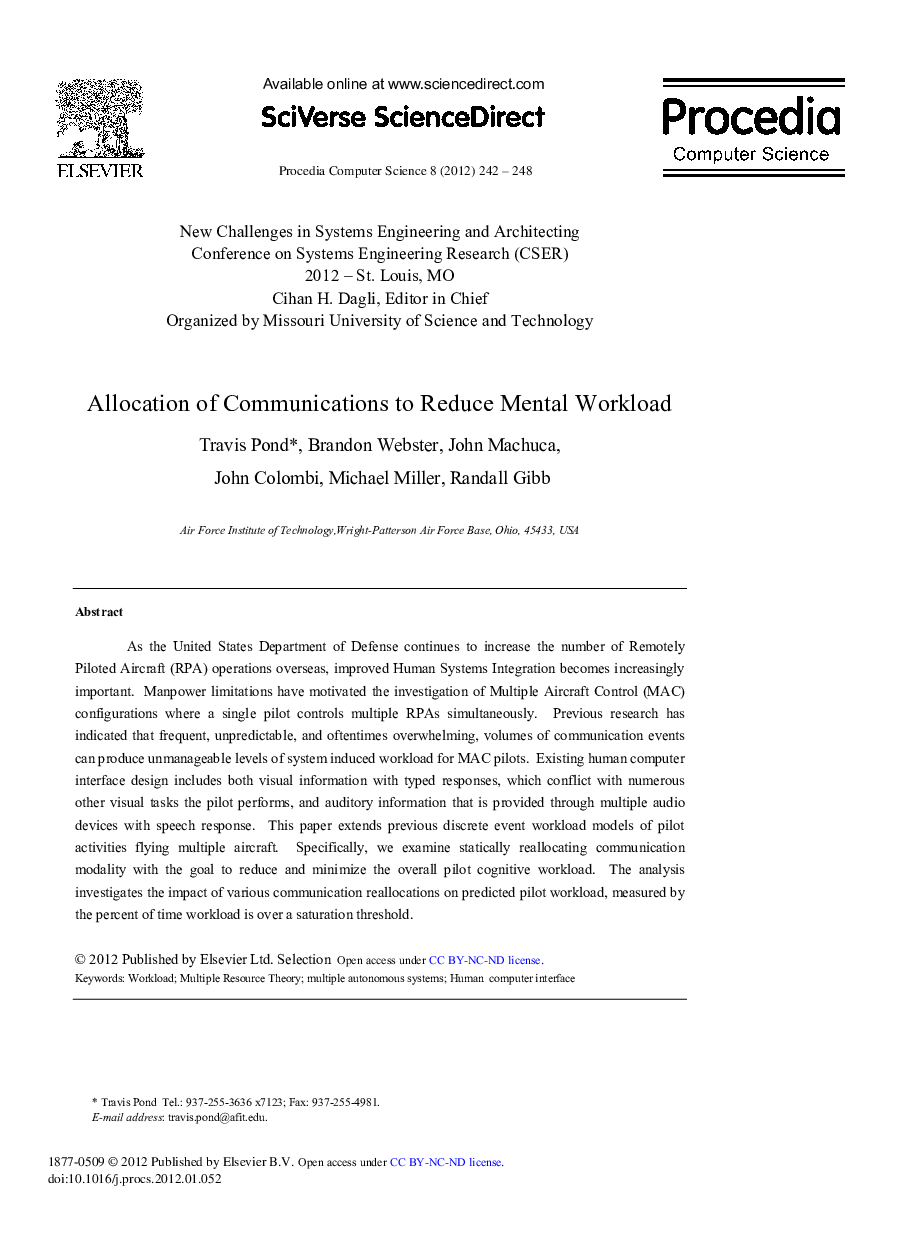| Article ID | Journal | Published Year | Pages | File Type |
|---|---|---|---|---|
| 488090 | Procedia Computer Science | 2012 | 7 Pages |
As the United States Department of Defense continues to increase the number of Remotely Piloted Aircraft (RPA) operations overseas, improved Human Systems Integration becomes increasingly important. Manpower limitations have motivated the investigation of Multiple Aircraft Control (MAC) configurations where a single pilot controls multiple RPAs simultaneously. Previous research has indicated that frequent, unpredictable, and oftentimes overwhelming, volumes of communication events can produce unmanageable levels of system induced workload for MAC pilots. Existing human computer interface design includes both visual information with typed responses, which conflict with numerous other visual tasks the pilot performs, and auditory information that is provided through multiple audio devices with speech response. This paper extends previous discrete event workload models of pilot activities flying multiple aircraft. Specifically, we examine statically reallocating communication modality with the goal to reduce and minimize the overall pilot cognitive workload. The analysis investigates the impact of various communication reallocations on predicted pilot workload, measured by the percent of time workload is over a saturation threshold.
